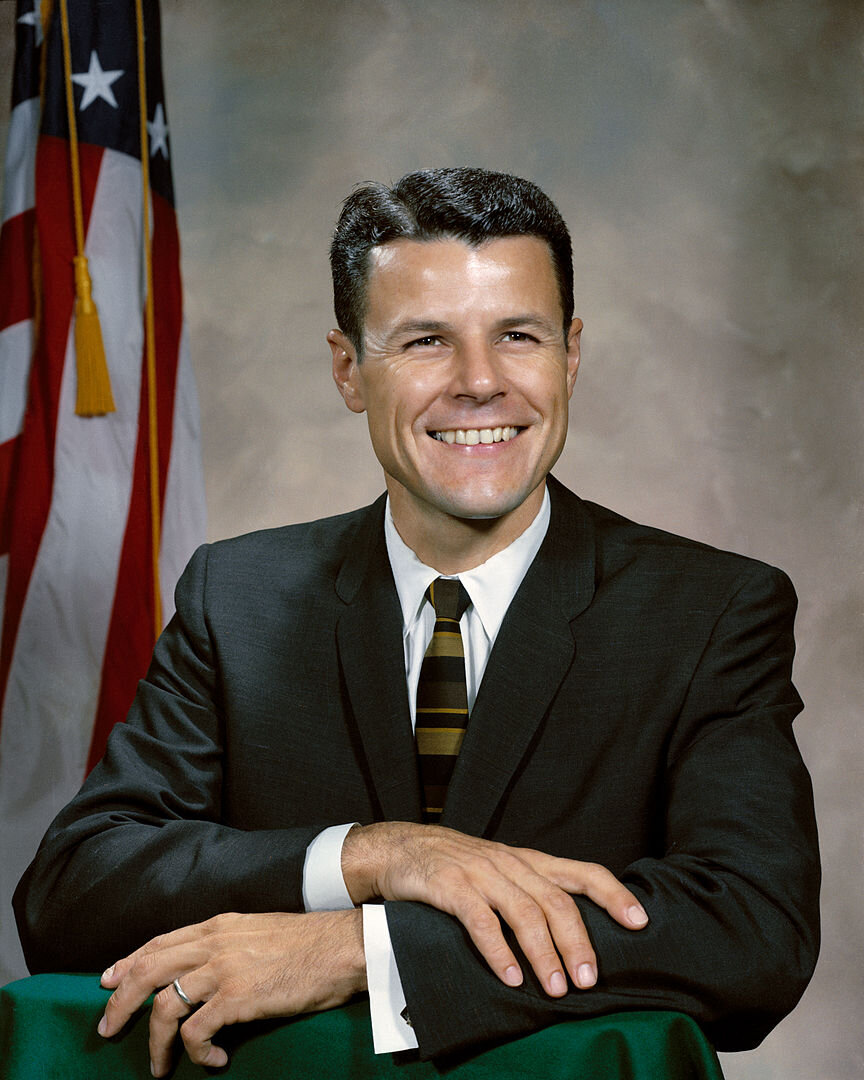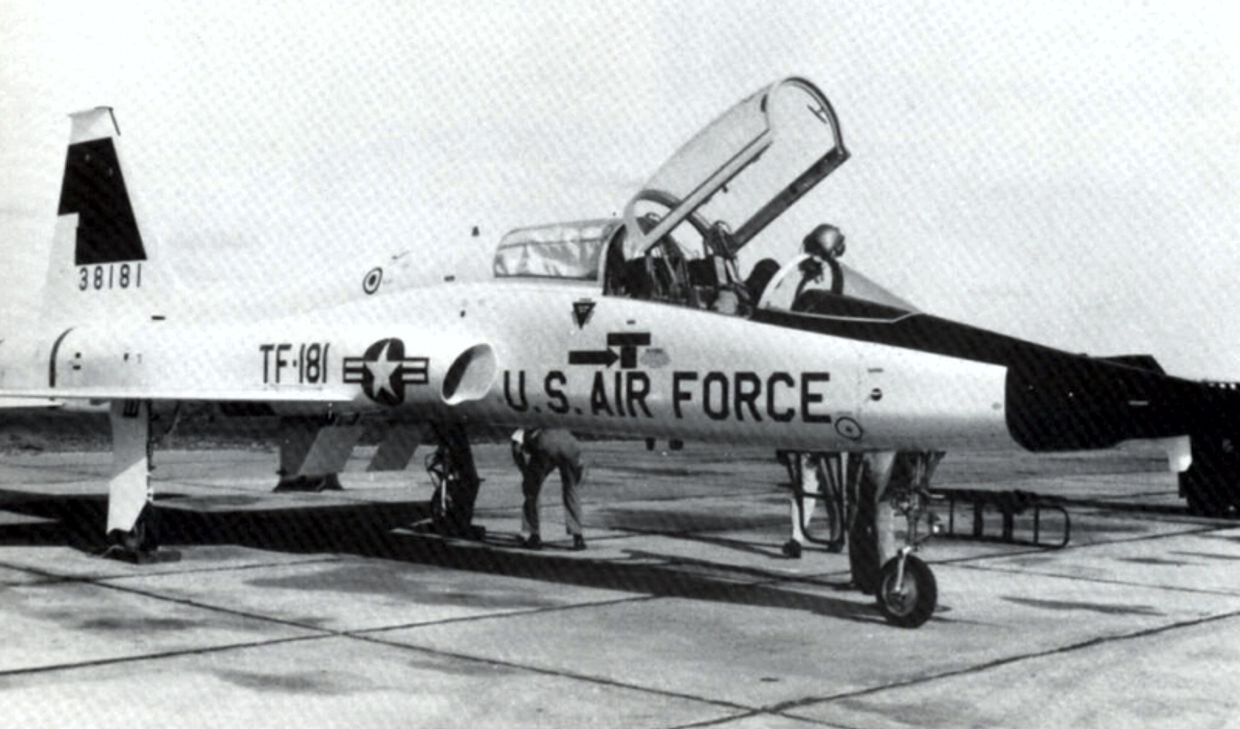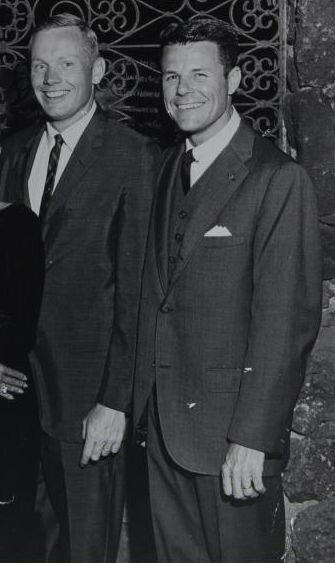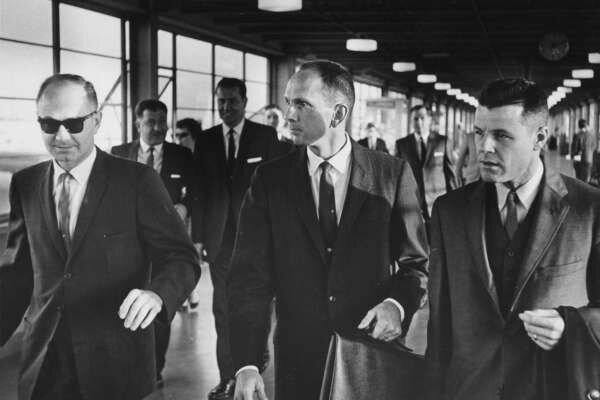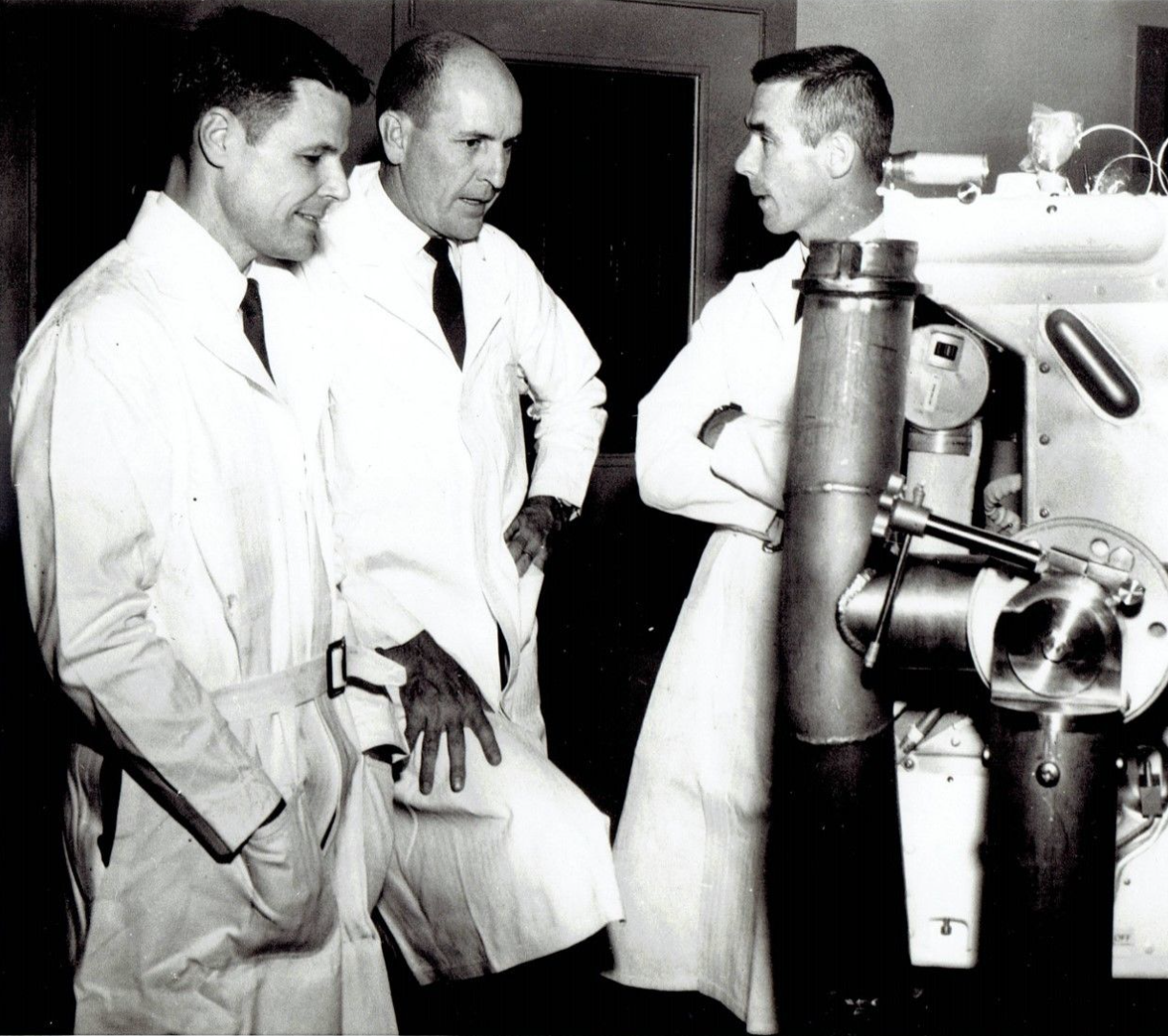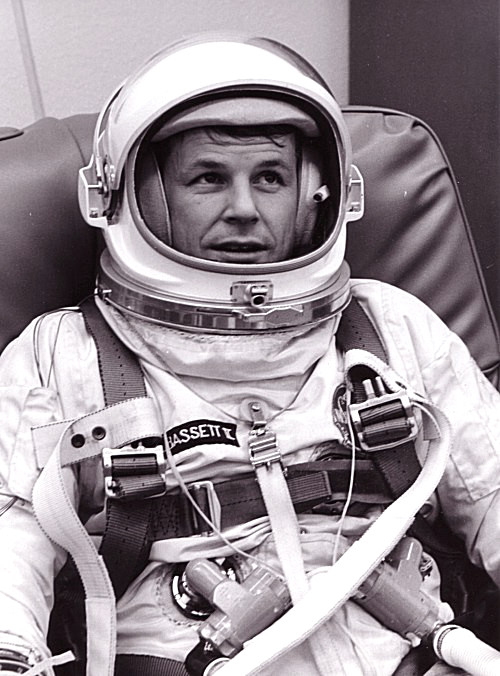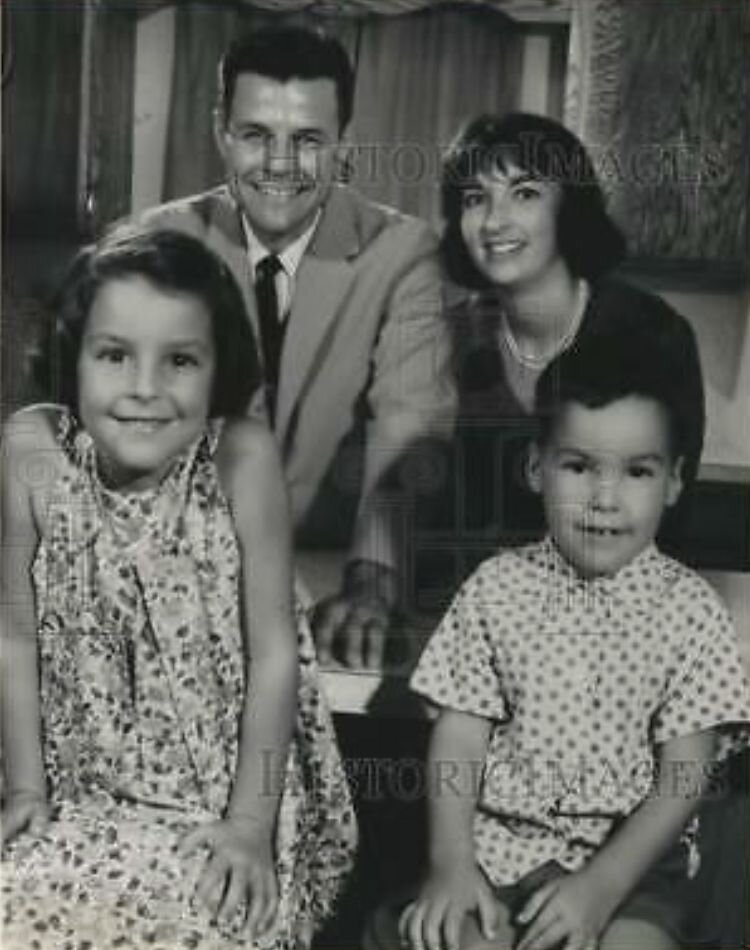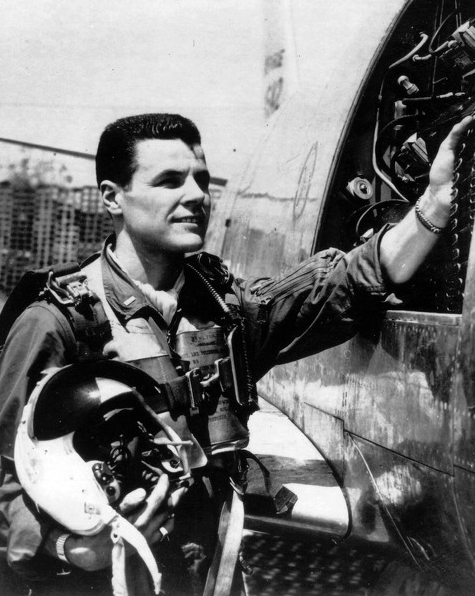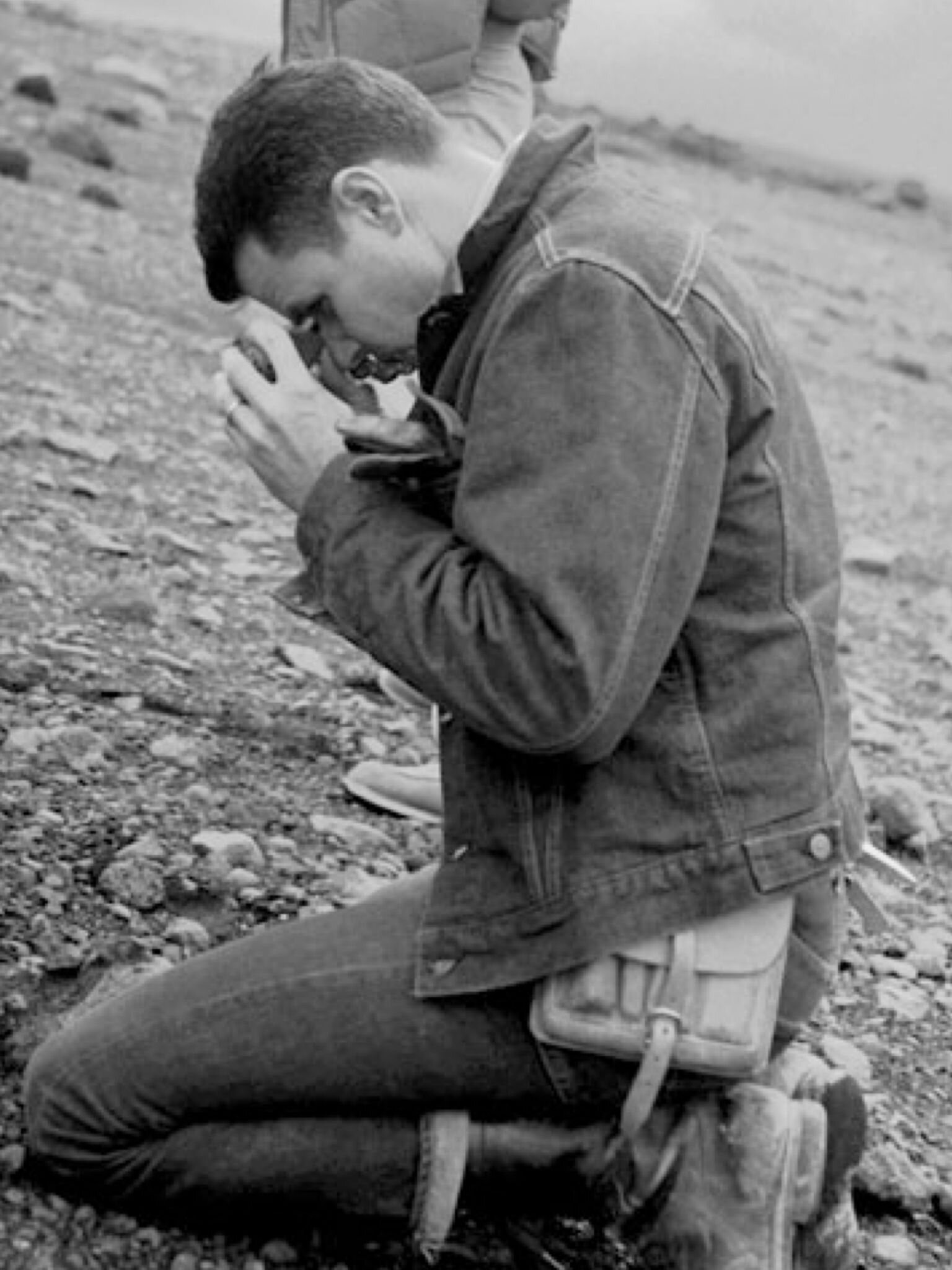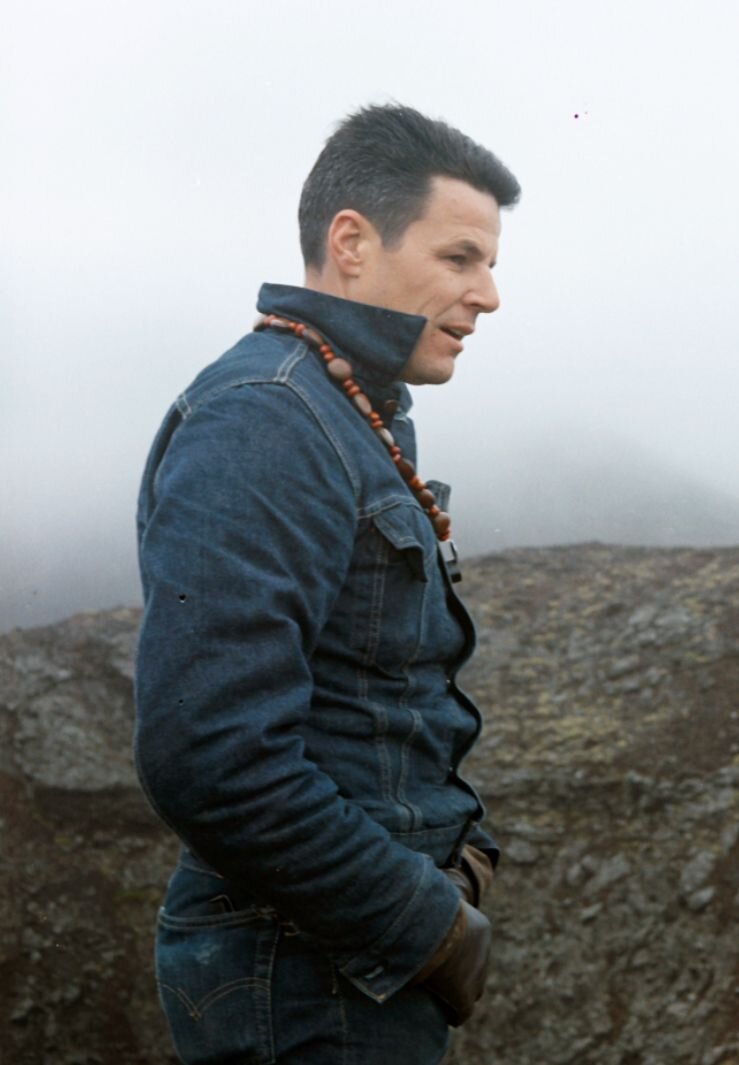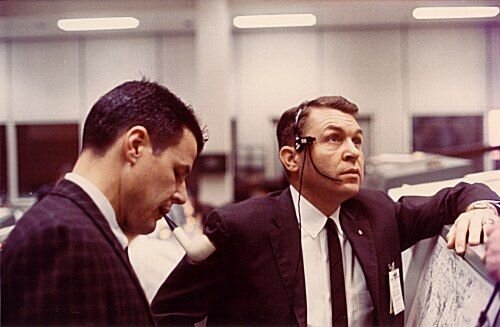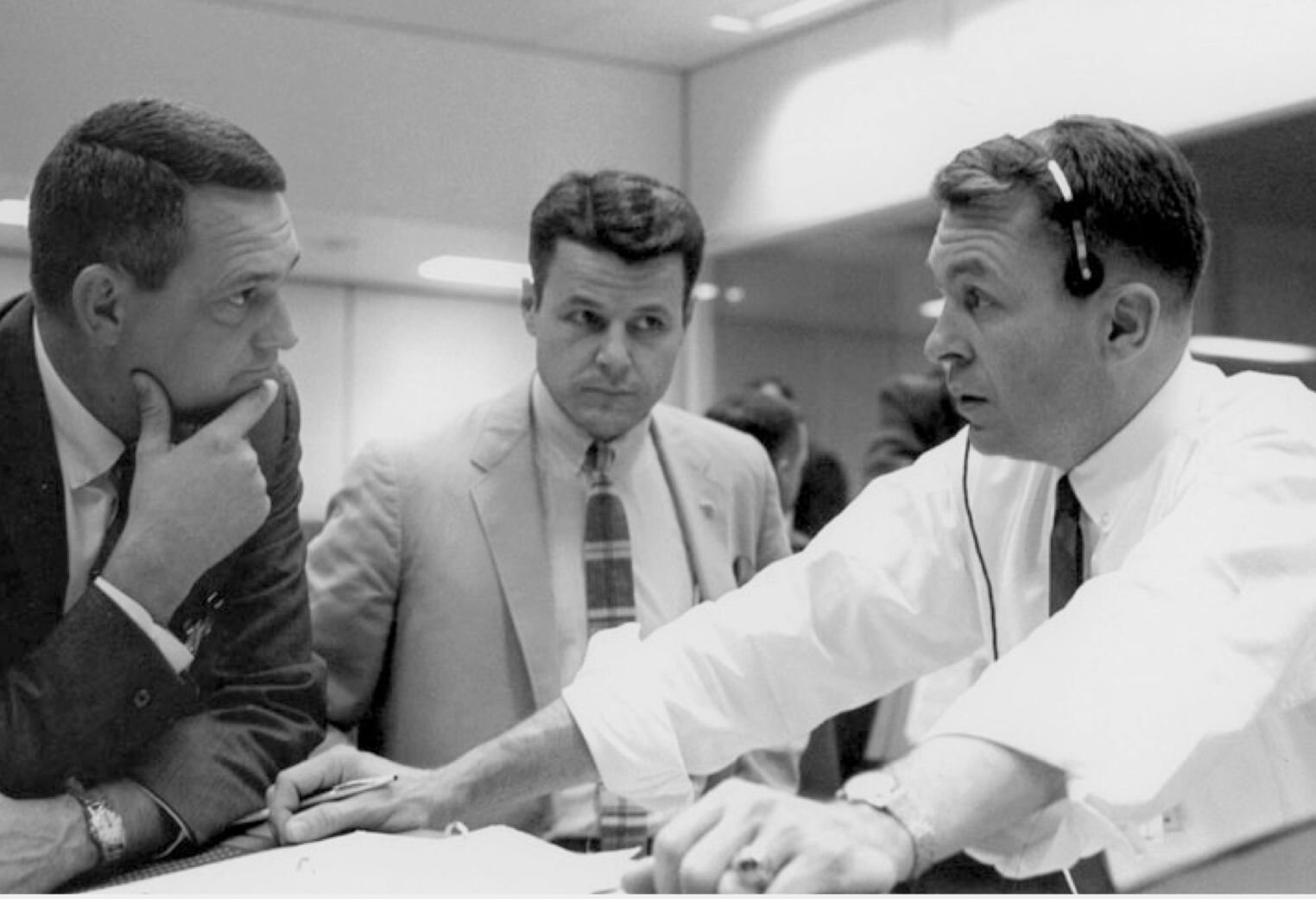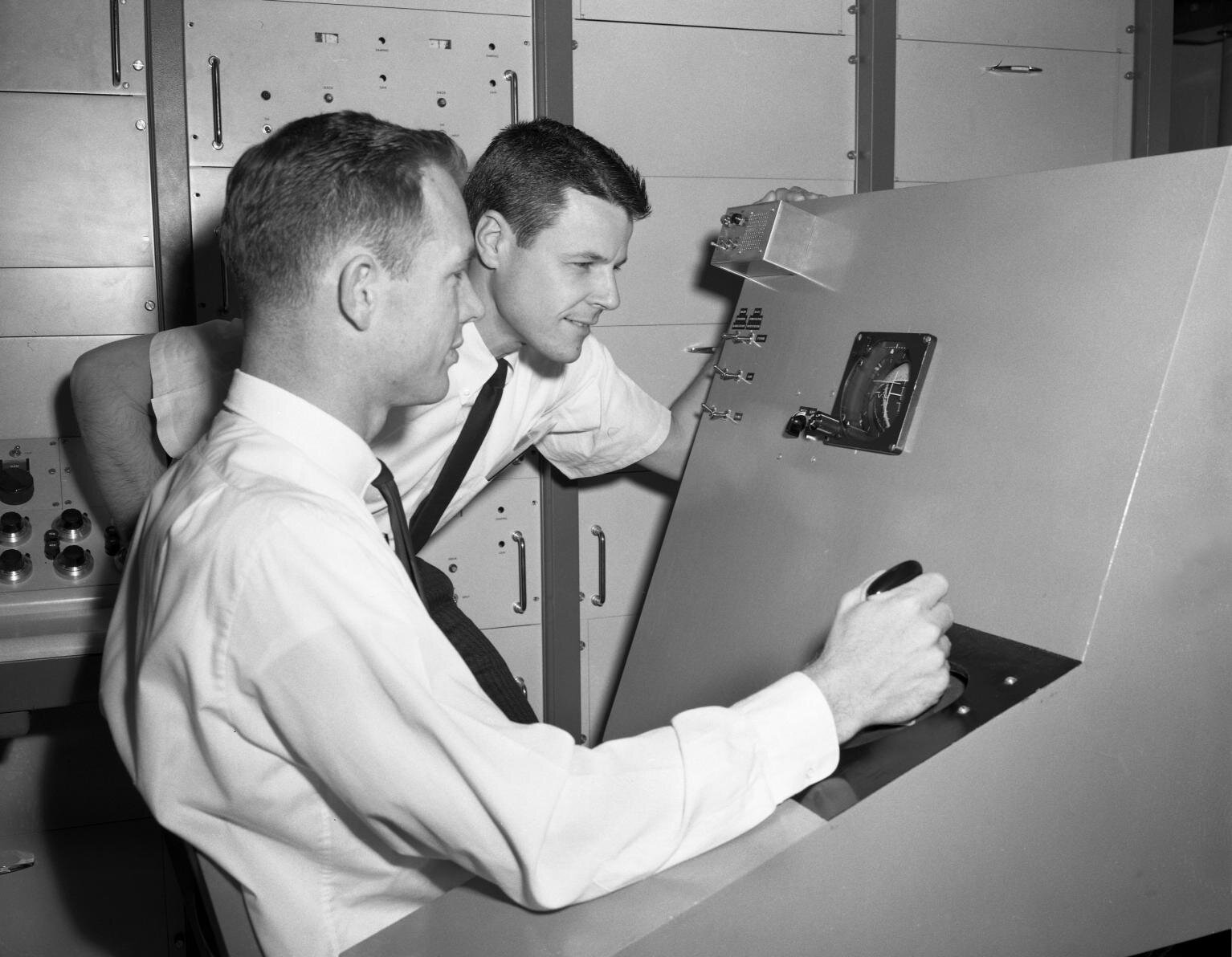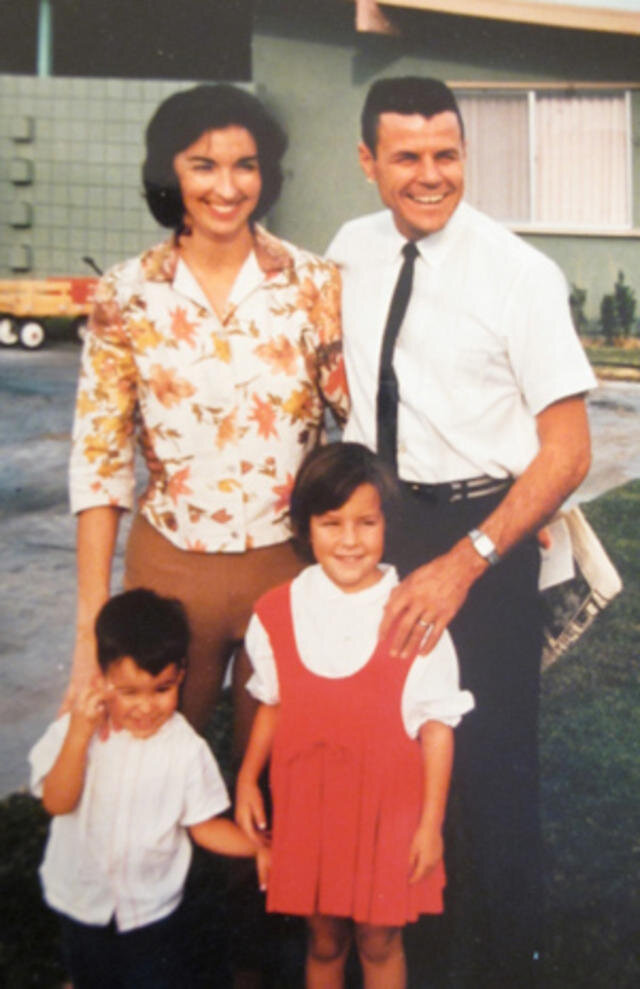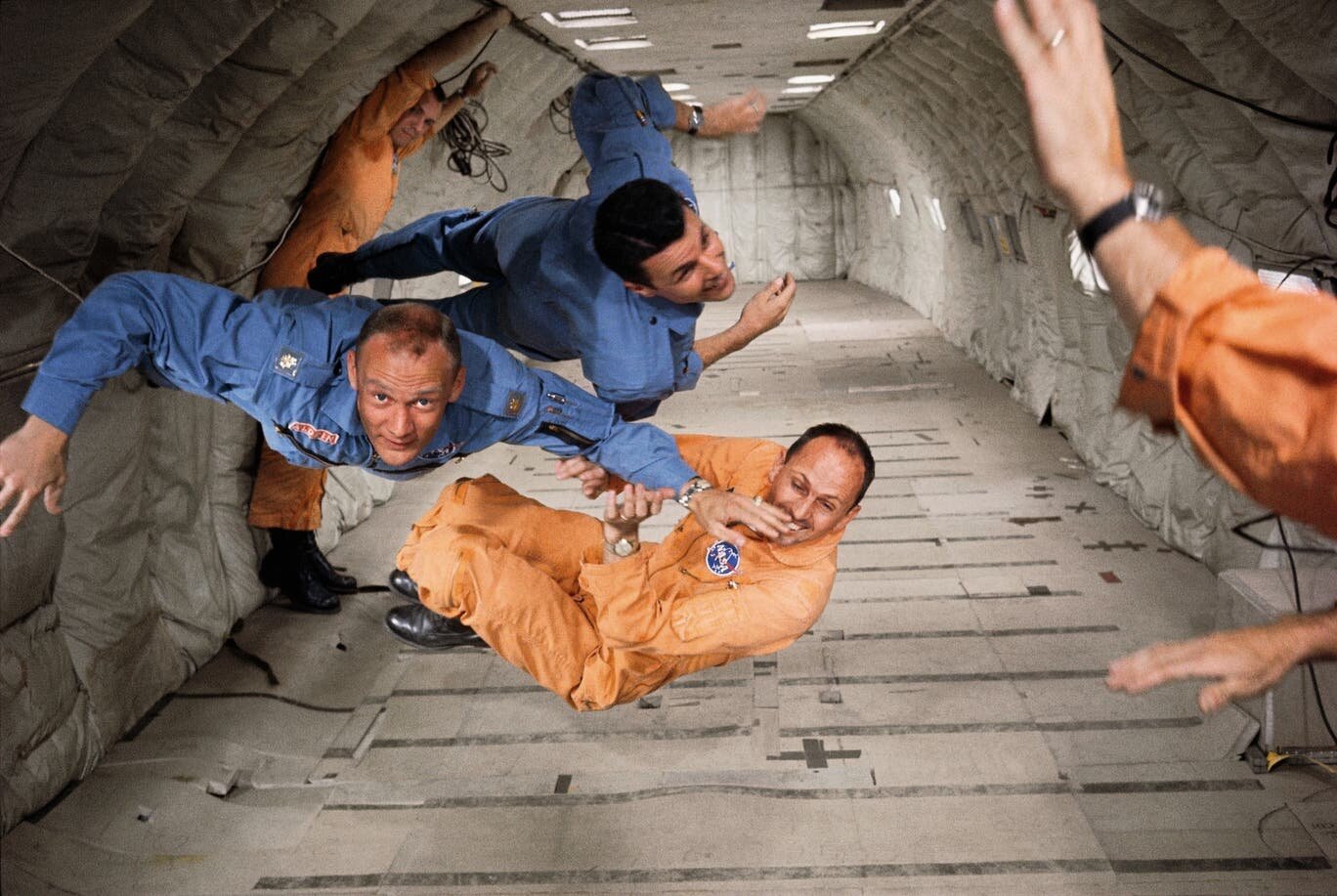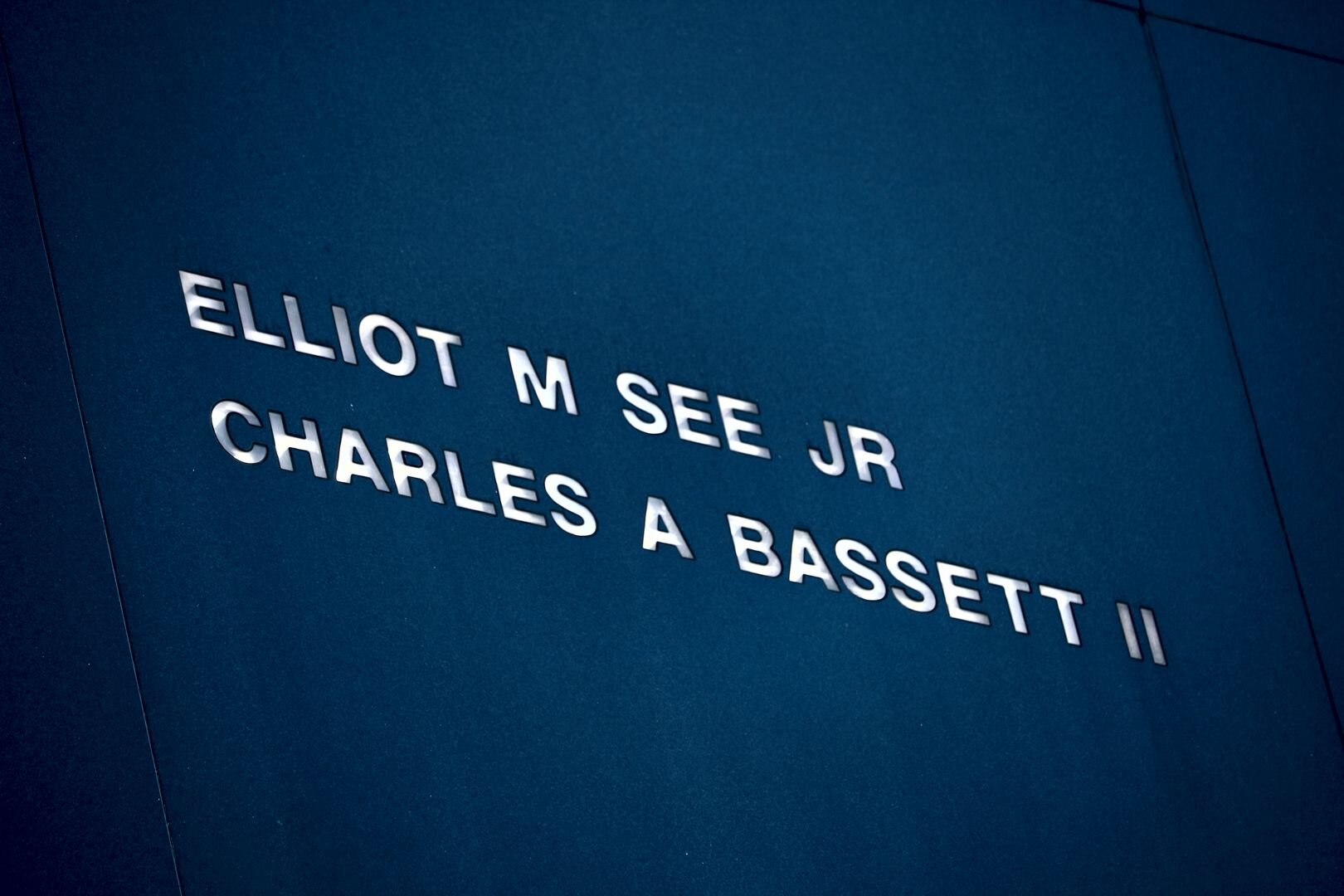Charles A. Bassett II
DECEMBER 30, 1931 - FEBRUARY 28, 1966
Early life and education
Charles Arthur Bassett II was born on December 30, 1931, in Dayton, Ohio, to Charles Arthur "Pete" Bassett (1897–1957) and Fannie Belle Milby Bassett (née James; 1907–1993).[1] Bassett was active in the Boy Scouts of America, where he achieved its second highest rank, Life Scout.[2] During high school, Bassett was a model plane aficionado. He belonged to a club that built gasoline-powered models and flew them in the school gym. Bassett's interest in model airplanes translated to real aircraft; he made his first solo flight at age 16. He worked odd jobs at the airport to earn money for flying lessons and earned his private pilot license at age seventeen.
After graduating from Berea High School, in Berea, in 1950, he attended Ohio State University, in Columbus, from 1950 to 1952. Midway through college in 1952, Bassett enrolled in Air Force ROTC; he entered the U.S. Air Force as an aviation cadet in October of that year.[1] He attended Texas Technological College, now Texas Tech University, from 1958 to 1960. He received a Bachelor of Science degree with honors in electrical engineering from Texas Tech and did graduate work at University of Southern California (USC) in Los Angeles.
Military service
ARPS Class III graduates Front row: Edward Givens, Tommie Benefield, Charlie Bassett, Greg Neubeck and Mike Collins. Back row: Al Atwell, Neil Garland, Jim Roman, Al Uhalt and Joe Engle.
He started his career with training at Stallings Air Base, North Carolina, and Bryan Air Force Base, Texas. Bassett graduated from Bryan in December 1953 and was commissioned in the Air Force. He arrived for additional training in Nellis Air Force Base, Nevada, as a second lieutenant.[1] There, he flew trainer aircraft, such as the T-6, the T-28, and the T-33, and flew the jet fighter F-86 Sabre in 1954.
He went to Korea with the 8th Fighter Bomber Group and flew a F-86 Sabre. Bassett was too late to fly any combat missions, and said, "If you don't have any challenge, you never know how good you are." Bassett was promoted to first lieutenant in May 1955.[6] He returned from Korea in 1955 and was assigned to Suffolk County Air Force Base, in New York, flying aircraft such as the F-86D, the F-102, and the C-119.
In November 1960, Bassett went to Maxwell Air Force Base, in Alabama, to attend Squadron Officer School. He also graduated from the Air Force Experimental Test Pilot School (Class 62A) and the Aerospace Research Pilot School (Class III) and was promoted to captain. Bassett was an experimental test pilot and engineering test pilot in the Fighter Projects Office at Edwards Air Force Base, California, and logged over 3,600 hours of flying time, including over 2,900 hours in a jet aircraft.
NASA career
Bassett was one of NASA's third group of astronauts, named in October 1963.[9] In addition to participating in the overall astronaut training program, he had specific responsibilities related to training and simulators. On November 8, 1965, he was selected as pilot of the Gemini 9 mission with Elliot See as command pilot.
According to chief astronaut Deke Slayton's autobiography, he chose Bassett for Gemini 9 because he was "strong enough to carry" both himself and See. Slayton had also assigned Bassett as command module pilot for the second backup Apollo crew, alongside Frank Borman and William Anders.
Personal life
On June 22, 1955, Bassett married Jeannie Martin. They had two children: Karen (December 22, 1957) and Peter (April 6, 1961).
Death
Bassett and Elliot See died on February 28, 1966, when their T-38 trainer jet, piloted by See, crashed into McDonnell Aircraft Building 101, known as the McDonnell Space Center, 1,000 feet (300 m) from Lambert Field airport in St. Louis, Missouri.[12][14] Building 101 was where the Gemini spacecraft was built, and the two astronauts were going there that Monday morning to train for two weeks in a simulator. They died within five hundred feet (150 m) of their spacecraft.
Both men's remains were buried in Arlington National Cemetery on Friday, March 4. During funeral services in Texas two days earlier, astronauts Jim McDivitt and Jim Lovell and civilian pilot Jere Cobb flew the missing man formation in Bassett's honor, while Buzz Aldrin, Bill Anders, and Walter Cunningham did the same to honor See.
About the T-38
The T-38 was the world’s first supersonic flight trainer. The Northrop T-38A Talon is a pressurized, two-place, twin-engine, jet trainer. Its fuselage is very aerodynamically clean and uses the “area-rule” (“coked”) to improve its supersonic capability. It is 46 feet, 4.5 inches (14.135 meters) long with a wingspan of 25 feet, 3 inches (7.696 meters) and overall height of 12 feet, 10.5 inches (3.924 meters). The one-piece wing has an area of 170 square feet (15.79 square meters). The leading edge is swept 32º. The airplane’s empty weight is 7,200 pounds (3,266 kilograms) and maximum takeoff weight is approximately 12,700 pounds (5,761 kilograms).
The T-38A is powered by two General Electric J85-GE-5 turbojet engines. The J85 is a single-shaft axial-flow turbojet engine with an 8-stage compressor section and 2-stage turbine. The J85-GE-5 is rated at 2,680 pounds of thrust (11.921 kilonewtons), and 3,850 pounds (17.126 kilonewtons) with afterburner. It is 108.1 inches (2.746 meters) long, 22.0 inches (0.559 meters) in diameter and weighs 584 pounds (265 kilograms).
The T-38A has a maximum speed of Mach 1.08 (822 miles per hour/1,323 kilometers per hour) at Sea Level, and Mach 1.3 (882 miles per hour/1,419 kilometers per hour) at 30,000 feet (9,144 meters). It has a rate of climb of 33,600 feet per minute (171 meters per second) and a service ceiling of 55,000 feet (16,764 meters). Its range is 1,140 miles (1,835 kilometers).
Between 1959 and 1972, 1,187 T-38s were built at Northrop’s Hawthorne, California, factory. As of 4 September 2018, 546 T-38s remained in the U.S. Air Force active inventory. The U.S. Navy has 10, and as of 30 October 2018, the Federal Aviation Administration reports 29 T-38s registered to NASA.

